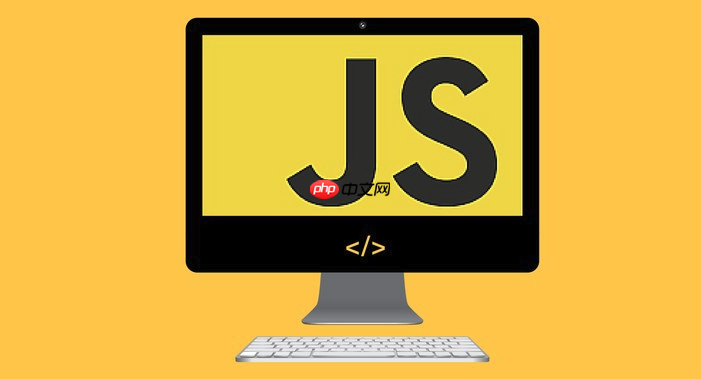在JavaScript中處理多個異步條件順序判斷的最佳方式是使用promise鏈或async/await。1. promise鏈通過.then()依次執行每個異步條件,并可在每個步驟中進行判斷和短路操作,但代碼較長且容易嵌套過深;2. async/await則以更直觀、同步化的方式編寫異步邏輯,提升可讀性和維護性;3. 為避免promise鏈過長,可拆分邏輯為獨立函數、使用async/await、良好命名及借助工具庫優化;4. 錯誤處理可通過.catch()統一捕獲或在async函數中使用try/catch結構化處理;5. 若條件無依賴關系,可用promise.all()并行執行以提升性能,同時注意負載與緩存策略的權衡。這些方法共同確保了異步流程的清晰、健壯與高效。

在JavaScript中,多個異步條件順序判斷的核心在于利用Promise鏈或async/await來確保每個條件都完成之后再進行下一個判斷。直接用if/else嵌套會陷入回調地獄,可讀性和維護性都很差。

解決方案:

使用Promise鏈或async/await,前者需要更仔細地處理Promise的狀態,后者則更接近同步代碼的寫法,更容易理解。以下分別給出示例:

Promise鏈:
function asyncCondition1() { return new Promise(resolve => { setTimeout(() => { const result = Math.random() > 0.5; // 模擬異步條件 console.log("Condition 1:", result); resolve(result); }, 500); }); } function asyncCondition2(result1) { return new Promise(resolve => { setTimeout(() => { const result = result1 && (Math.random() > 0.3); // 依賴第一個條件的結果 console.log("Condition 2:", result); resolve(result); }, 500); }); } function asyncCondition3(result2) { return new Promise(resolve => { setTimeout(() => { const result = result2 && (Math.random() > 0.7); // 依賴第二個條件的結果 console.log("Condition 3:", result); resolve(result); }, 500); }); } asyncCondition1() .then(result1 => { if (result1) { return asyncCondition2(result1); } else { console.log("Condition 1 failed, skipping Condition 2 and 3"); return Promise.resolve(false); // 短路后續的Promise } }) .then(result2 => { if (result2) { return asyncCondition3(result2); } else { console.log("Condition 2 failed, skipping Condition 3"); return Promise.resolve(false); // 短路后續的Promise } }) .then(finalResult => { if (finalResult) { console.log("All conditions passed!"); } else { console.log("One or more conditions failed."); } }) .catch(error => { console.error("An error occurred:", error); });
async/await:
async function checkConditions() { try { const result1 = await asyncCondition1(); if (!result1) { console.log("Condition 1 failed, exiting."); return; } const result2 = await asyncCondition2(result1); if (!result2) { console.log("Condition 2 failed, exiting."); return; } const result3 = await asyncCondition3(result2); if (!result3) { console.log("Condition 3 failed, exiting."); return; } console.log("All conditions passed!"); } catch (error) { console.error("An error occurred:", error); } } checkConditions();
如何避免Promise鏈過長導致的可讀性問題?
Promise鏈過長確實會降低代碼的可讀性。可以考慮將Promise鏈拆分成更小的、邏輯獨立的函數,每個函數負責一小部分邏輯,然后再將這些函數組合起來。 另一種方法是使用async/await,它允許你以更線性的方式編寫異步代碼,避免了深層嵌套的Promise鏈。例如,可以將多個.then()調用合并到一個async函數中。 此外,良好的命名也很重要。給每個Promise函數或async函數取一個清晰、描述性的名字,可以幫助你更好地理解代碼的意圖。 還可以使用一些工具庫,如Bluebird.JS,它提供了一些額外的Promise操作符,可以簡化Promise鏈的編寫。
如何處理異步條件中的錯誤?
在Promise鏈中,可以使用.catch()方法來捕獲任何地方拋出的錯誤。 最好在Promise鏈的末尾添加一個.catch(),以確保所有未處理的錯誤都被捕獲。 如果需要在特定的Promise中處理錯誤,可以在該Promise之后立即添加一個.catch()。
在使用async/await時,可以使用try/catch塊來捕獲錯誤。 將可能拋出錯誤的代碼放在try塊中,然后在catch塊中處理錯誤。 也可以在async函數外部添加一個全局的錯誤處理機制,例如使用window.onerror或process.on(‘uncaughtException’)來捕獲未處理的錯誤。
如何優化多個異步條件的性能?
如果多個異步條件之間沒有依賴關系,可以并行執行這些條件,而不是順序執行。可以使用Promise.all()或Promise.allSettled()來并行執行多個Promise,并在所有Promise都完成后獲取結果。 這樣可以顯著提高性能,尤其是在異步操作耗時較長的情況下。 但要注意,并行執行可能會增加服務器的負載,因此需要根據實際情況進行權衡。 此外,還可以使用緩存來避免重復執行相同的異步操作。如果某個異步條件的結果在一段時間內不會發生變化,可以將結果緩存起來,下次直接從緩存中獲取,而無需再次執行異步操作。



















